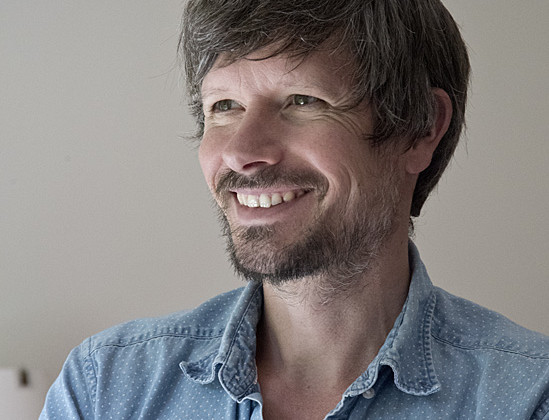Norfolk Filmmaker’s “Bob and the Trees” Leads Off Series of Independent Films at the Norfolk Library
By Ruth Melville
“Bob and the Trees” is a film about a middle-aged logger in a rural town in western Massachusetts who struggles to make a living over the course of a harsh winter. Although fictional, the movie has the quiet attention to ordinary life of a fly-on-the-wall documentary. This fall, the film’s director, Diego Ongaro, will be presenting a series of independent films, including “Bob and the Trees,” at the Norfolk Library.
Ongaro, who recently moved to Norfolk, grew up in France. He came to the United States in 2005 when he and his wife, the novelist Courtney Maum, decided to live closer to her family. Ongaro was also ready for a change. He had been working in television in France, but the rise of reality TV bored him, and he wanted to switch to narrative and fiction.
In 2007, the couple moved to Sandisfield, Mass., and began fixing up a log cabin. One of their new acquaintances in town was the man who would become the star of Ongaro’s first feature-length film—Bob Tarasuk, a forester in his 50s and a local figure in Sandisfield. “We clicked,” Ongaro says, “we became friends.” Ongaro wanted to make short films about local subjects, and Tarasuk, as anyone who has seen the film can attest, is charismatic. “I knew I wanted to put a camera on him,” Ongaro says.
The result was a 30-minute “day in the life” film about Tarasuk and his logging business. Ongaro used local, nonprofessional actors, and the dialogue was largely improvised. This short movie did well at film festivals, and the filmmaker realized there was “a bigger story to be told here.” Luckily, Tarasuk himself was game. He was proud of the short film, and had gained the confidence to star in a longer, more scripted work.
The writing for the feature-length “Bob and the Trees,” which was a collaboration between Ongaro and Maum, was slow and difficult. “I had to detach myself from the real Bob,” Ongaro says. While there is a story that holds the film together—Tarasuk’s efforts to cope with some bad luck and bad decisions that threaten to hurt his professional and personal relationships—Ongaro also wanted the structure to be loose enough that viewers would feel they were watching real life happen.
Only one of the actors, the woman playing Bob’s wife, is a professional. The rest of the parts, as in the original short film, are played by local people. Ongaro worked with an eight-person crew and filmed with small, lightweight cameras in an effort to make the inexperienced actors as comfortable as possible. Although some of the scenes were fairly scripted, for others, he just set the stage for the actors and let them go.
From the beginning, winter was intended to be an important part of the movie. Ongaro wanted to capture the “dreadful but beautiful face” of a New England winter, since “it’s such an important part of life for people living here.” The film was shot in 2014, and on January 20 of that year the ground was still bare. But as everyone in Norfolk remembers, the filmmaker was about to get lucky. February 2014 turned out to be one of the snowiest and coldest on record, and Ongaro had to buy boots and parkas to keep his crew from freezing.
Although the movie took two years to write, shooting took only 15 days, and the film was was completed by December 2014. When Ongaro heard that it had been accepted into the Sundance Film Festival, he says it was “the best news of my life.” After premiering at Sundance, the movie went on to enjoy a successful festival run, appearing at over 20 international film festivals.
Unfortunately, most independent films, even excellent ones, don’t make it to theaters. Thinking about his own film, Ongaro acknowledges that a film about “real blue-collar people depicted in the most genuine way possible” is always going to be a hard sell commercially. So after joining the Norfolk Library’s event committee, he decided to organize a short series of independent films to be shown at the library. “I thought it would be nice to show some good ones and also to have the filmmakers here for discussions afterward.”
“Bob and the Trees” will be the first film in the series, on September 16. Next, on October 15, is Zachary Treitz’s film “Men Go to Battle,” about two brothers who grow apart during the Civil War. The third and last film, on November 19, will be “Christmas Again,” by Charles Poekel. The film, shown at Sundance the same year as “Bob and the Trees,” is about a man selling Christmas trees out of a trailer in New York City.
If the series is a success, Ongaro would like to try it again next year. He’d like to show more “strong films,” he says, ones that are “very different in tone and theme.”
In the meantime, he has started writing a new film, to be shot locally. “I’ve been here nine years now, and I want to tell stories about people I know.”
Photo by Bruce Frisch: Diego Ongaro’s film is fictional, but it draws on real-life events and people in Sandisfield.

